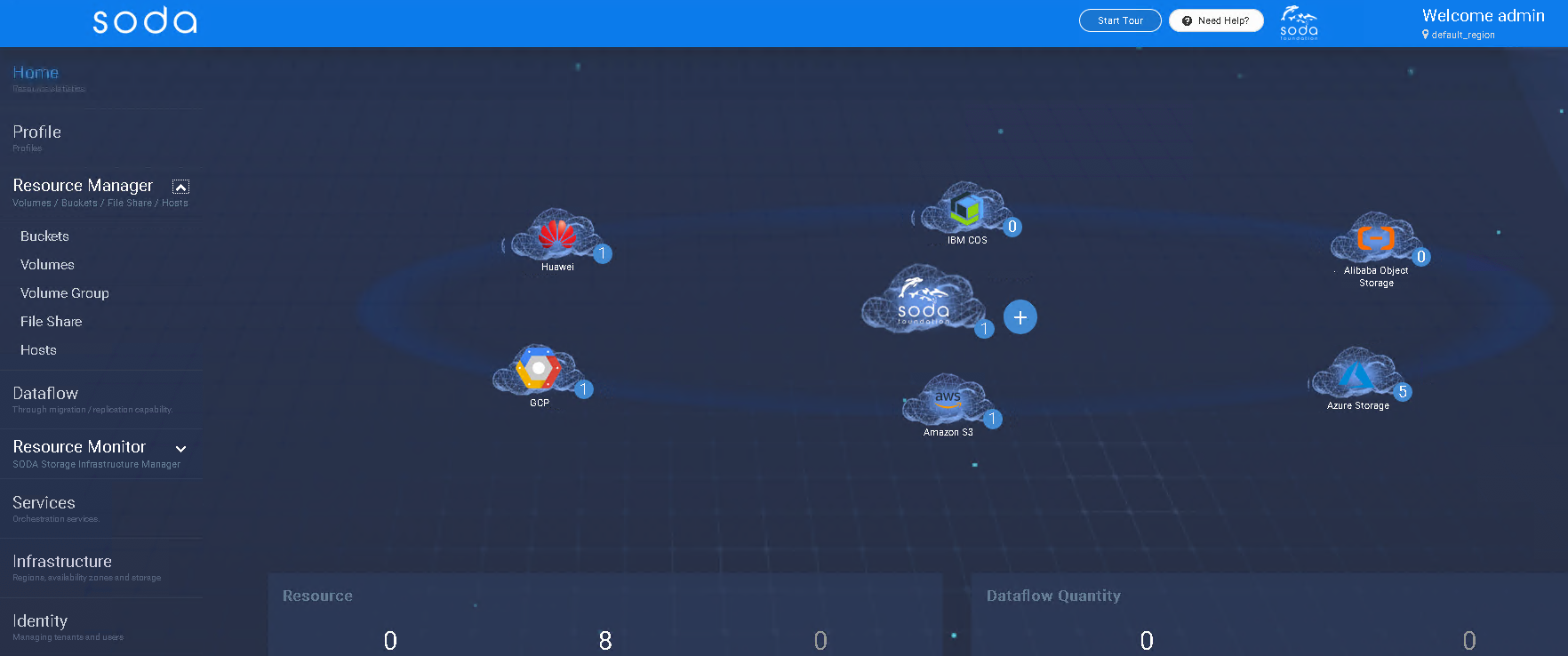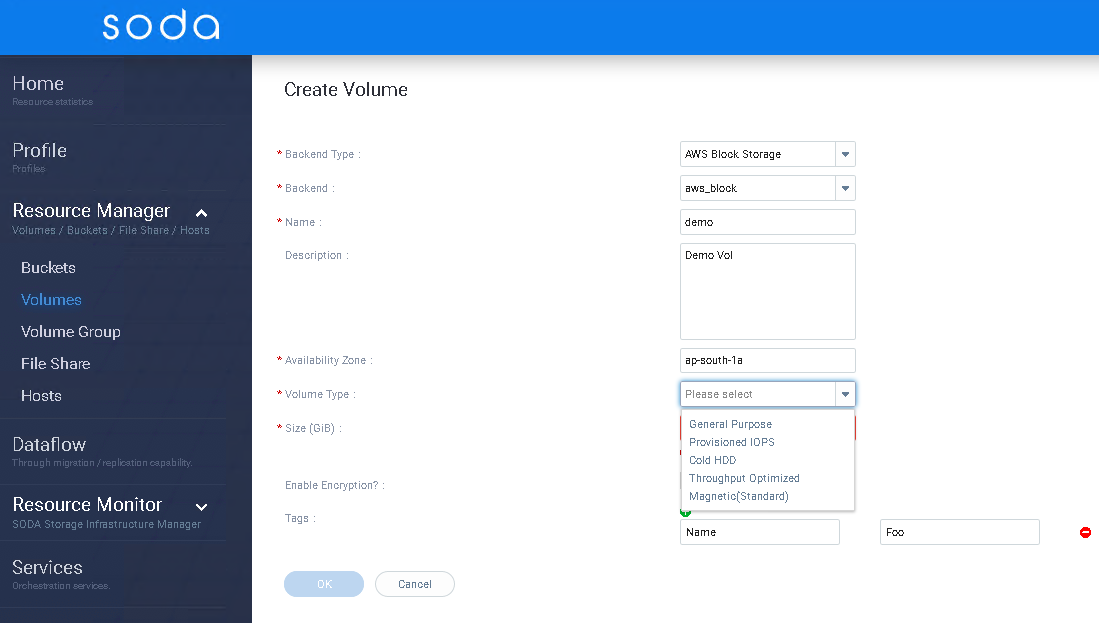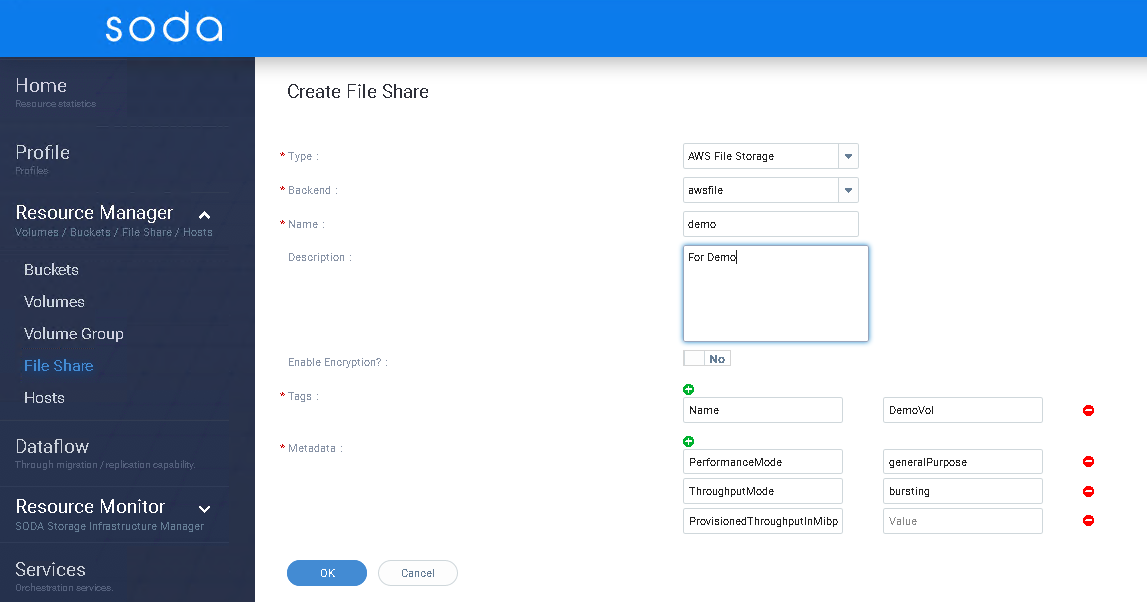File and Block service
Introduction to File and Block storage service in multi-cloud
SODA Multicloud provides a cloud vendor agnostic data management for hybrid cloud, intercloud, or intracloud. The goal is to provide a unified interface to support file, block, and object services across multiple cloud vendors.
Details about the design and use cases can be found at: multi-cloud File storage and multi-cloud block storage
Getting Started
This guide shows how to use the File and Block storage services of multi-cloud to create and manage cloud volumes and cloud fileshares. This will illustrate the operations through SODA Dashboard.
To refer the API specs, please check multi-cloud API specs
Supported metrics as of now:
| Cloud Vendor | Block | File |
|---|---|---|
| AWS | EBS | EFS |
| Azure | - | File share |
| Huawei | EVS | EFS |
| GCP | - | Filestore |
Installing SODA multi-cloud
Please refer SODA installation using Ansible Or Check the developer guide multi-cloud lcoal cluster installation through repo
SODA Dashboard UI can be accessed via
http://{your_host_ip}:8088/#/home
login using the default admin credentials:
admin/opensds@123
Register Backend

Create new backend using remote cloud bucket
Click on (+) for registering a storage backend. Choose appropriate backend type for Block or File storage


Create Cloud Volume
- Go to Resource Manager -> Volumes -> Cloud
- Click on Create button
- Select appropriate backend Type from Type drop down
- Select corresponding Backend name registered from Backend drop down
- Fill required details for creating the volumes
Tags and Metadata need to be chosen appropriately

List, Modify and Delete Cloud Volumes
Listing
- Go to Resource Manager -> Volumes -> Cloud
You can find the list of Cloud Volume

Modify
- Go to Resource Manager -> Volumes -> Cloud
- Select the volume to be modified
- From Operation column, select Modify form the More option You can choose to modify the volume attributes
Delete
- Go to Resource Manager -> Volumes -> Cloud
- Select the volume to be deleted
- From Operation column, select Delete form the More option The volume should be deleted
Create Cloud File Share
- Go to Resource Manager -> File Share -> Cloud
- Click on Create button
- Select appropriate backend Type from Type drop down
- Select corresponding Backend name registered from Backend drop down
- Fill required details for creating the file share
Tags and Metadata need to be chosen appropriately

List, Modify and Delete Cloud fileshare
Listing
- Go to Resource Manager -> File Share -> Cloud
You can find the list of Cloud File Shares

Modify
- Go to Resource Manager -> File Share -> Cloud
- Select the File Share to be modified
- From Operation column, select Modify form the More option You can choose to modify the File Share attributes
Delete
- Go to Resource Manager -> File Share -> Cloud
- Select the File Share to be deleted
- From Operation column, select Delete form the More option The File Share should be deleted
Please note that the volume or file share attributes, metadata and tags are compatible with Cloud vendors. Please refer cloud vendor docs for more details